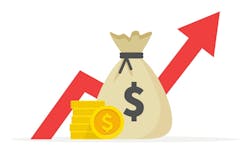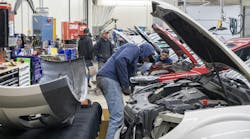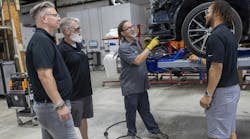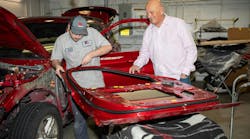Have you asked yourself today, “What’s motivating me?”
A shop operator should reflect on, or work toward, a goal every single day. What carrot is dangling in front of you today?
Kelly Bennett, business management coach for the automotive industry, says that when it comes to a body shop owner increasing gross dollar produced per technician per hour, aiming for a goal of increasing work by an hour each day can make a huge difference in annual revenue.
Stop simply looking at sales reports and thinking, “I need more money.” Rather, start setting a specific goal to increase sales.
“Most shops don’t even track how many hours sold in a day and they should,” Bennett says.
Meanwhile, industry veteran Craig Amundson says that, a few years ago, his shop technicians were producing $300 per technician per hour. At the time, that number was $100 higher than what most shops produced.
Amundson, managing and operating partner for Raymond Auto Body in St. Paul, Minn., says his process for increasing gross dollars produced per tech per hour is best used when a crew is paid hourly.
“For flat rate, your specific cost is going to be the same on every car,” Amundson says. “If your guys make 40 percent, no matter how many hours on a job, they’re still going to get 40 percent.”
Below, Bennett shares his process for increasing the aforementioned shop floor metric.
As told to Melissa Steinken
1) Track labor gross profit.
Labor sells everything else. Paint does not sell labor. The labor portion should by far be the highest in sales and the highest gross profit.
To track labor gross profit, determine what your labor rate is, what you pay your average technician per hour and know what your cost is. For example, if you pay a technician $25 per hour and the labor rate is $100 per hour, the technician is getting 25 percent of the hourly rate. So the gross profit is the difference. In this example, the gross profit is 75 percent.
The problem is if the hours aren’t sold. I always say that you’re buying and selling time from your technicians. I buy hours from them and I sell hours to customers.
2) Calculate the financial advantage of selling one more hour.
It doesn’t mean spending an extra hour a day. It means getting paid for everything you do at the right amount of money. Too much work is given away that shops should be charging for.
I call this the carrot, or the goal, that motivates you. All you have to do is take what the labor rate is, multiply it by the number of technicians. If they have three technicians and they could sell one extra hour per technician per year, then that would be three extra hours a day. Take the three hours multiplied by the labor rate. That’s $300 per day.
It might not seem like a lot of extra money but once that extra $300 is multiplied by how many days a shop is open during the year, then it adds up. Most shops are open about 250 days out of the year. That’s an extra $75,000 for gross profit each year.
3) Track “E” time.
It’s impossible to aim for 100 percent technician efficiency and having them touch the car because a technician needs a lunch break and other breaks in the day. So, I suggest aiming for a goal of 90 percent. Then, track all of the “E” time, or expense time.
Expense time is how many hours, out of eight hours in a day, the technician spent touching the car. Track the time being spent and when the technician takes a break or walks away from the car and for what reason. How long did they spend away from the car?
If a technician is spending too much time searching for parts across the shop, walking back and forth, then maybe have that technician shadow a more organized employee. Or, ask the technicians, in an all-team meeting, what steps can be taken to improve efficiency in those eight hours.



